Banish warm-weather critters for good
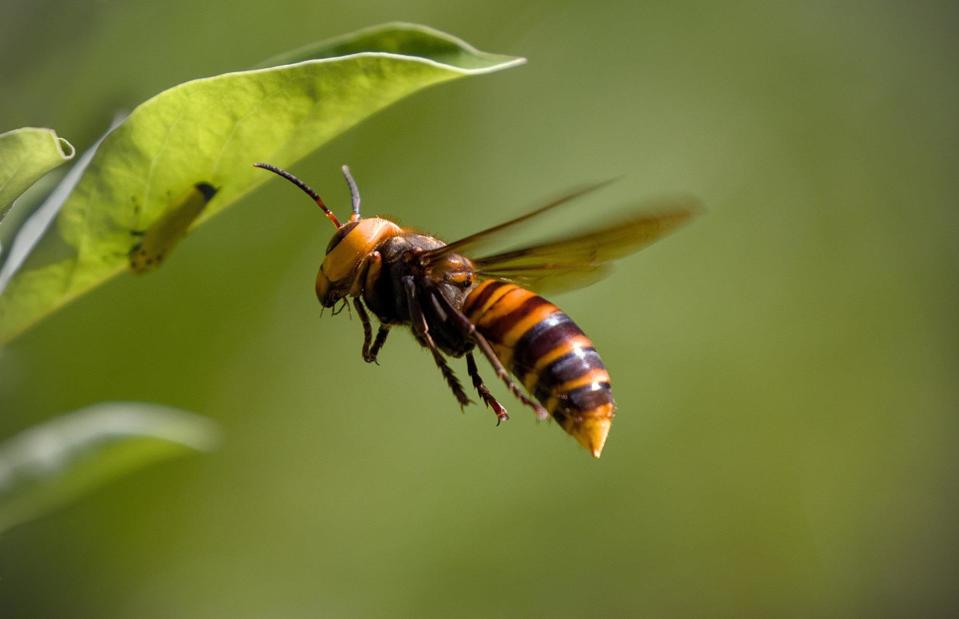
Bilkis Akther / Shutterstock
Summer is wonderful for many reasons, but one downside is the pests that come out with the sun. Just as more welcome insects like bees and butterflies thrive in the warmer weather, so too do less loveable creatures.
Insects are poikilothermic (cold-blooded) and so warmer temperatures cause them to multiply rather rapidly. And, where there are plenty of insects to munch on, there may be even bigger mammals lurking in corners, too! Read on as we reveal summer’s most persistent pests and what to do to deter them…
Flying ants
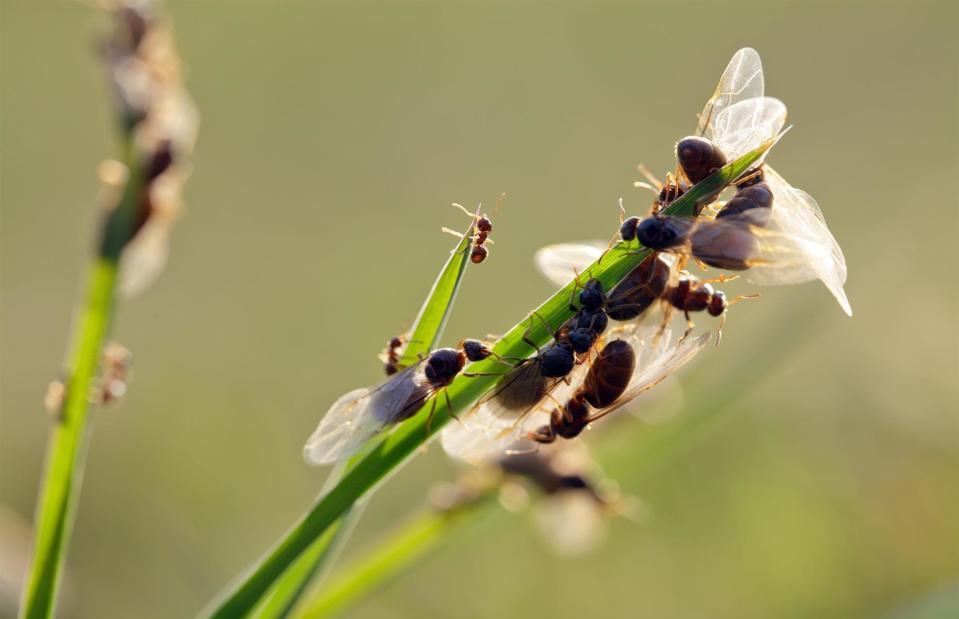

Stephane Bidouze / Shutterstock
Also known as alates, flying ants are “almost always the mature queens and males of the black garden ant”, the Natural History Museum explains. They can be up to 15mm long and each summer, they begin an annual swarming event, in a bid to find a mate.
This usually occurs in July or August and coincides with a period of hot and humid weather. While they can be a nuisance, they are actually considered a good thing by many, since “their tunnelling activities play a vital role in improving soil quality”. Plus, their swarming events also provide a vital food resource for many species of birds.
Flying ants: treatment
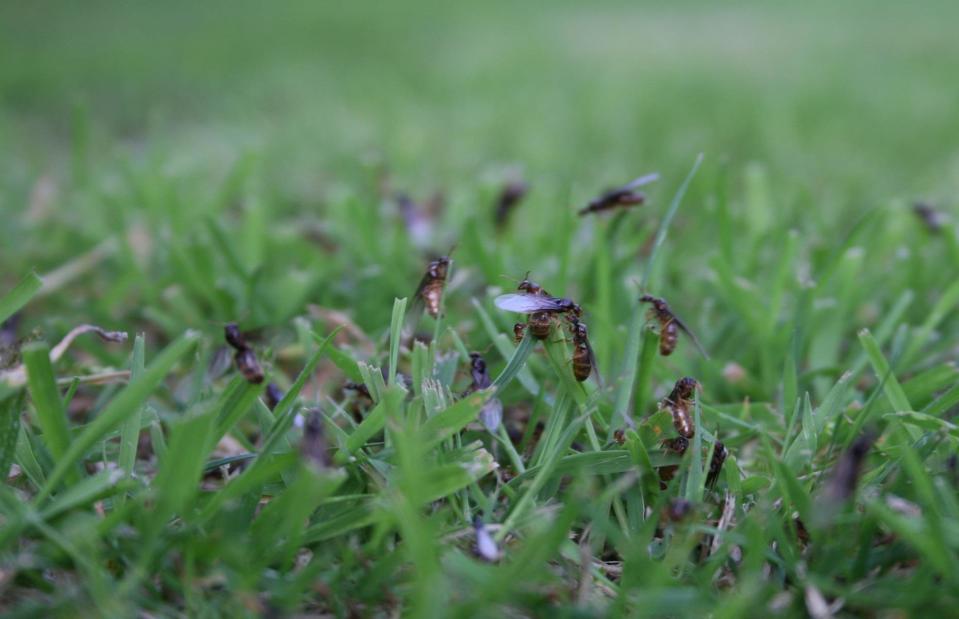

Geert Naessens / Shutterstock
However, if you have a colony in your garden and you’re finding they’re making their way inside try sealing doors, windows and other entry points to stop them from gaining access. In hot weather, you can fit insect mesh curtains and covers to allow the air in while keeping bugs out. You should also store food properly to avoid attracting pests, remove standing water from the garden and utilise natural substances as deterrents.
“Lemon or orange peels, cinnamon sticks, or cloves can be strategically placed near entry points or areas where you’ve noticed ant activity,” according to advice from Planet Natural. “The strong scents of these natural repellents can discourage ants from venturing further into your home.” Fly traps, a dish soap repellent or a 50:50 diluted white vinegar and water spray might also help.
Maybugs
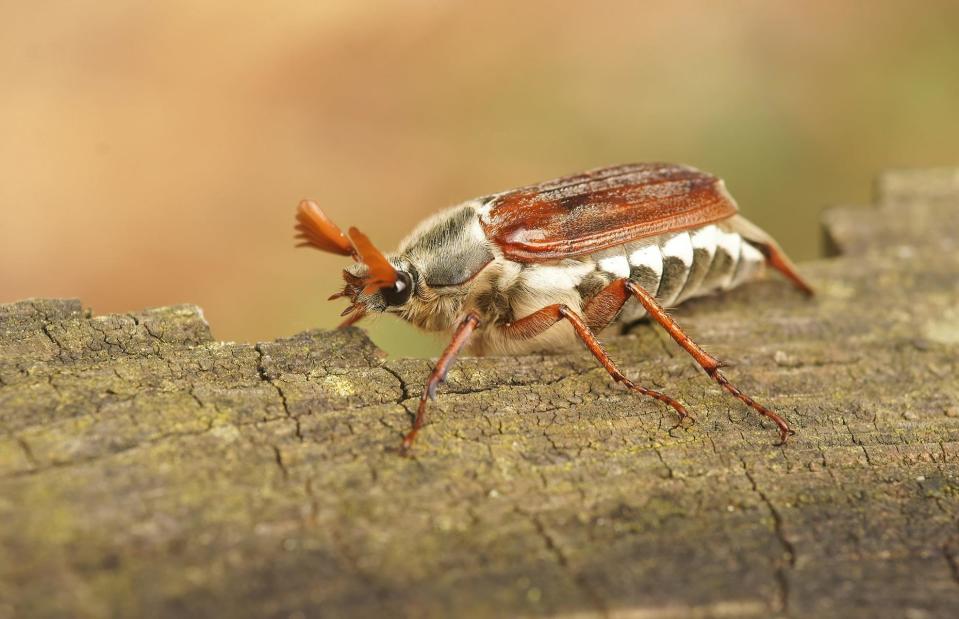

Wirestock Creators / Shutterstock
Despite being cute, maybugs (also called June bugs) might not be welcome in your garden, since they love chewing on leaves and flowers. The adult beetles will emerge in May and remain active until July or August. They can be identified by their large brown-coloured, slightly hairy bodies, wings and long antennas. They also make a loud buzzing sound.
Plus, if they’re left to flourish in the garden, they can cause considerable damage to plants, flowers and grass. The issue can get so bad that your garden will become untreatable. It’s also worth noting that their young, chafer grubs, live in soil until they become adults and will feed on the roots of grass, causing extensive damage to lawns and plants.
Maybugs: treatment
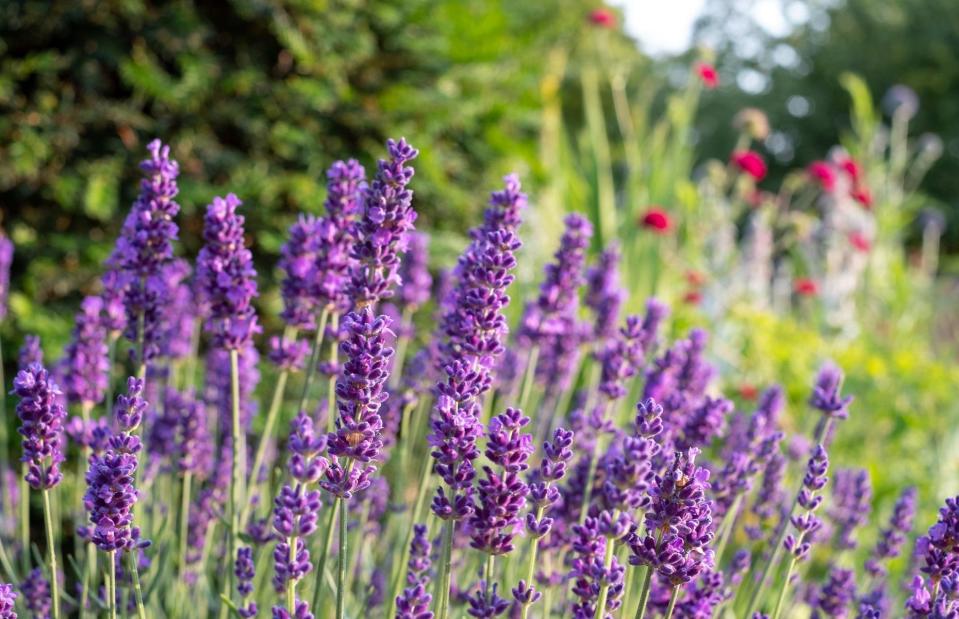

Luckily, there are several ways to rid your garden of maybugs and their grubs. For starters, adults can be scared away by spraying lavender-scented products around plants and flowers. Purchase a ready-made spray or create your own by mixing water with a few drops of lavender essential oil.
Like many bugs, they are attracted to light so keep them out of your house by closing windows after dark. As for the grubs, prevention is the only way to stop them. Birds, badgers and hedgehogs will feast on them, so bring them to the surface of the soil by watering the garden at night and covering the damp area with a blanket or sack. Remove it in the morning and let the birds get to work!
Bedbugs
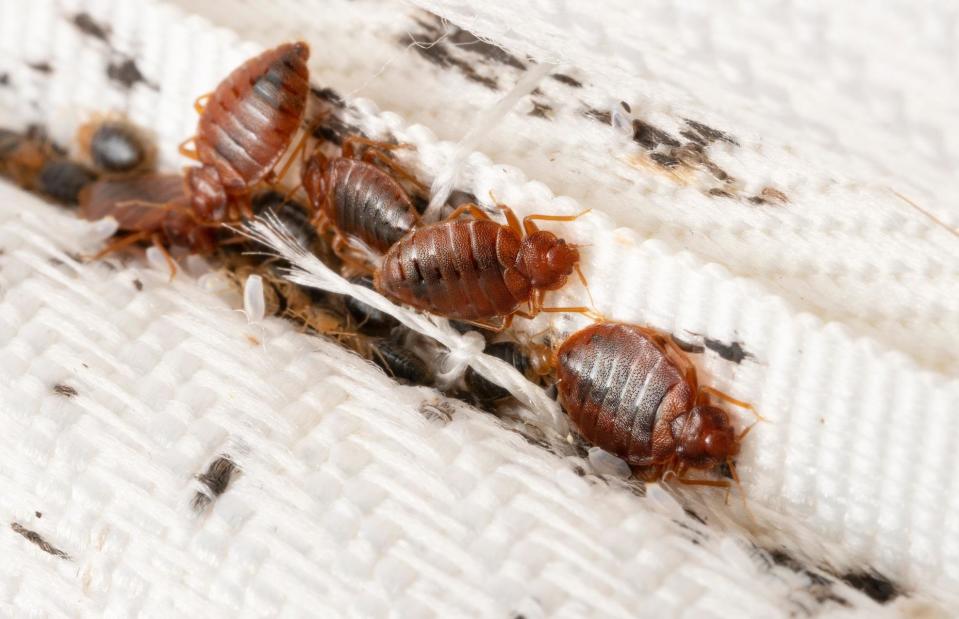

Georgy Dzyura / Shutterstock
A common household pest, bedbugs are tiny insects that feed on blood, leaving people with bites and rashes. Highly resilient and hard to spot, they love upholstered furniture such as mattresses, headboards and chairs. Prolific breeders, bedbugs typically lay between 200 and 500 eggs over a two-month period, in batches of 10 to 50.
To make matters worse, bedbugs can survive up to 18 months without food and experts have warned that they are becoming increasingly resistant to pesticides, making them harder to remove. Bedbug season begins at the end of spring each year and generally ends at the beginning of November.
Bedbugs: treatment
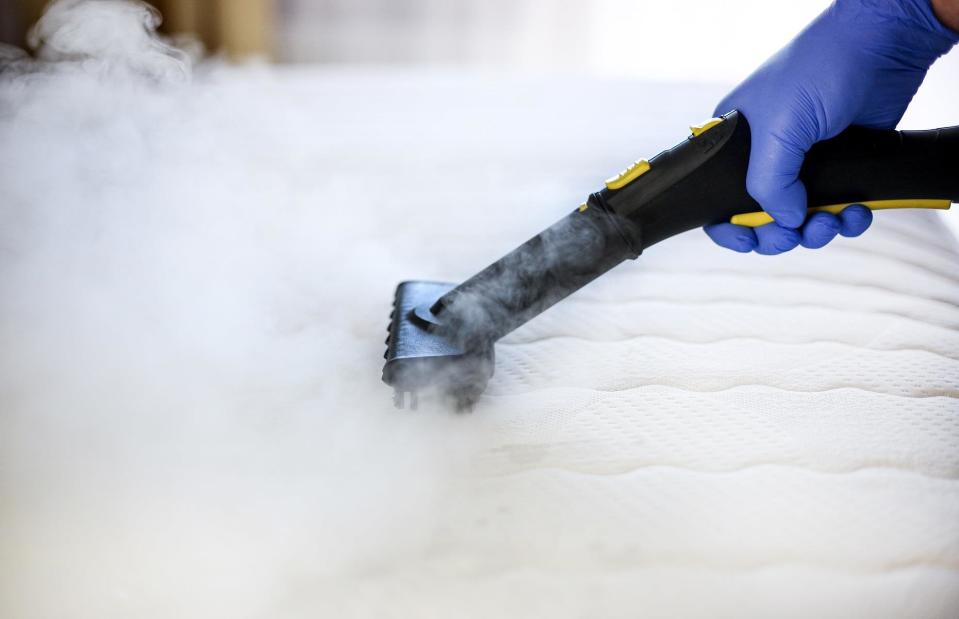

Thankfully, there are certain things you can do to help reduce the chances of bedbugs entering your home. Since they can easily be transferred from furniture to clothing, if you travel somewhere, consider leaving your luggage far away from any upholstered surfaces until you have a chance to inspect and clean your clothes. Look for the bugs themselves or small rust-brown spots that could indicate their presence.
They can often be found hiding in second-hand furniture, too, so if you’re planning on buying anything, thoroughly examine it before bringing it inside. You should also regularly hoover and steam your mattress, and wash your bedding at least once a week. If you have a serious bedbug problem, then it’s time to call in the professionals.
Flies
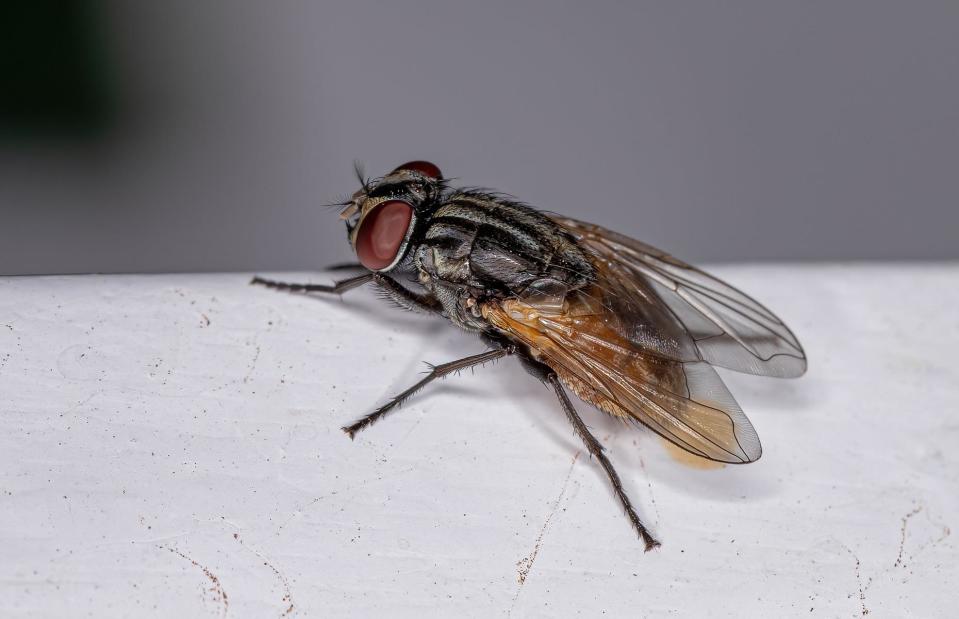

Vinicius R. Souza / Shutterstock
From house flies to blue bottles, flies are incredibly common in the UK and can carry a range of viruses and diseases since they enjoy feasting on decaying organic material and waste.
This includes kitchen garbage, pet excrement and even animal food. So, we definitely don’t want them flying around the house and landing on our furnishings and food. Fans of warm weather, flies become very active at the end of May and are at their peak in late summer.
Flies: treatment


Daria Aleshina / Shutterstock
Thankfully, there are several ways you can deter flies. For starters, you’ll want to ensure all food is secured to deprive them of somewhere to feed and lay eggs. Use food storage containers with tight-fitting lids to keep sugar, grains and cereal out of reach and check fruit bowls for any over-ripeness that will attract them to the sugar. If possible, put away pet food bowls after they’ve eaten, particularly wet food which flies love.
Ensure you regularly clean your house, especially the kitchen. You’ll also want to keep your waste bin secured and replace your bag regularly, cleaning inside and out of the bin afterwards, to ensure any food residue is removed.
Hornets
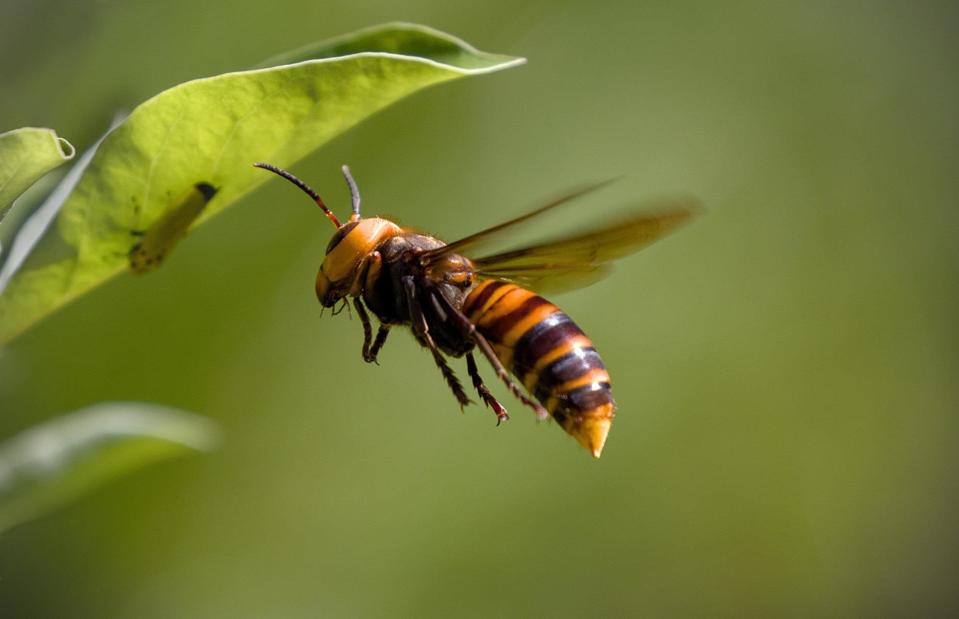

Bilkis Akther / Shutterstock
The UK is home to just one native hornet: the European hornet. However, in recent months, there have been record sightings of the dangerous, invasive Asian hornet. “Preying on insects, including honey bees and other pollinators, it is a significant threat to bee colonies and other native species in the UK,” The Wildlife Trusts confirms. “They are most likely to be seen near bee hives, preying on bees defending the hive.”
First sighted in the UK in 2016, it’s likely Asian hornets were accidentally imported through goods, such as timber, soil, or potted plants. They are active between April and November, but August and September are when you can expect to see more of them.
Hornets: treatment
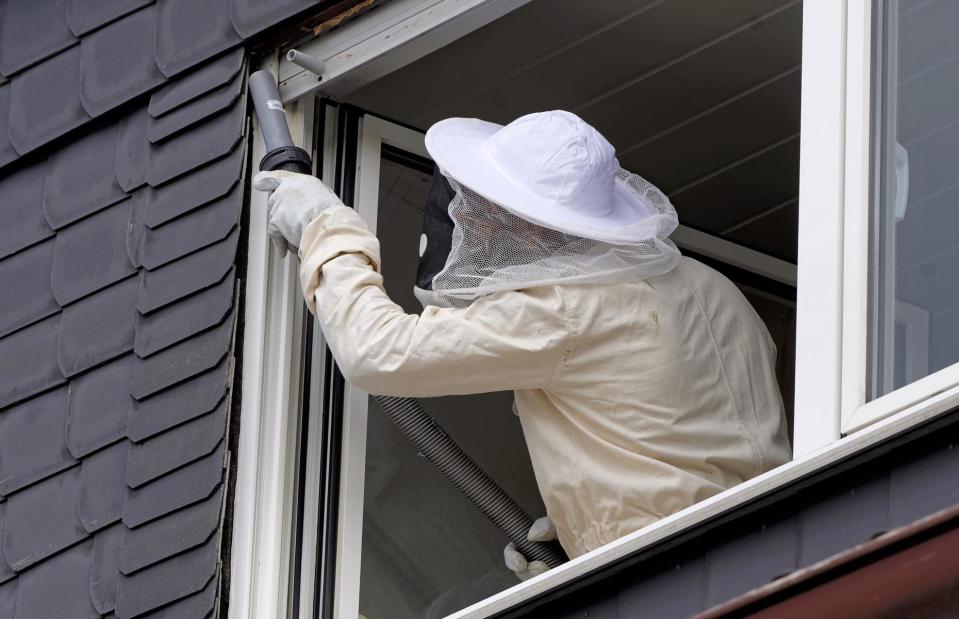

Bildagentur Zoonar GmbH / Shutterstock
Scarily, there have been 108 sightings of Asian hornets since 2016, with 56 sightings in 2023 alone, according to government figures reported by the BBC. Following this sharp rise in numbers, which has been put down to flooding and increased temperatures in recent years, the Department for Environment, Food & Rural Affairs (DEFRA), is asking Brits to report sightings in a bid to protect our native biodiversity.
While expert exterminators should be called into safety and thoroughly remove hornet nests, it is recommended that people don’t try to intervene with Asian hornets and instead, take photos and use the Asian Hornet Watch app to report the issue.
Ants
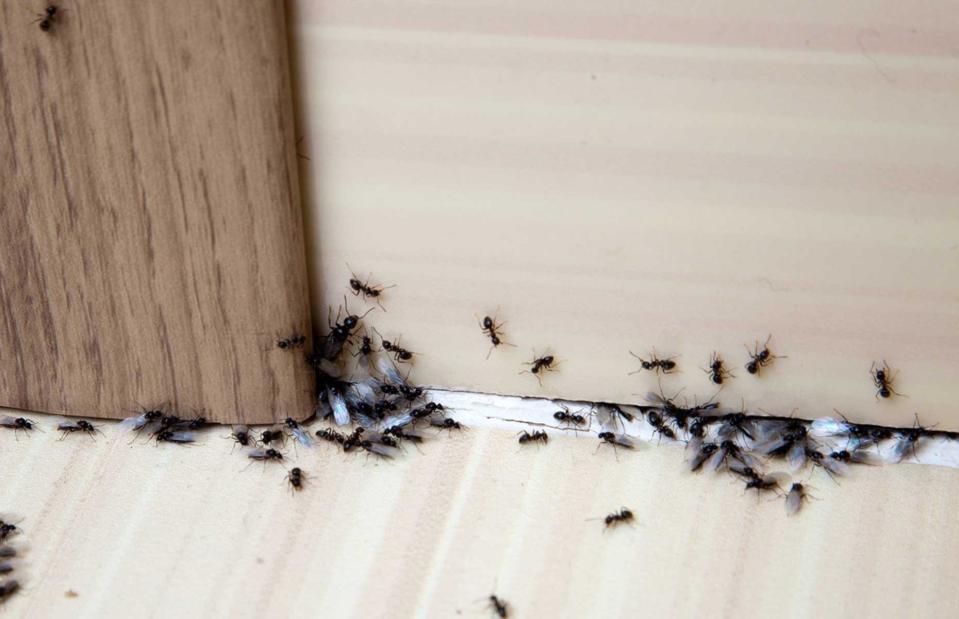

Ants might be small, but they can be a serious nuisance for homeowners. Once they get into your house, it can be difficult to get rid of them. Highly social and organised, they always work together in vast numbers and once a foraging worker ant has found a big supply of food, he will let the colony know.
Food remnants, especially sugary ones, can attract ants from far away. And being so tiny, an army of ants can get into a property by scurrying through any narrow cracks in walls or floors. Before you know it, your worktops are covered.
Ants: treatment
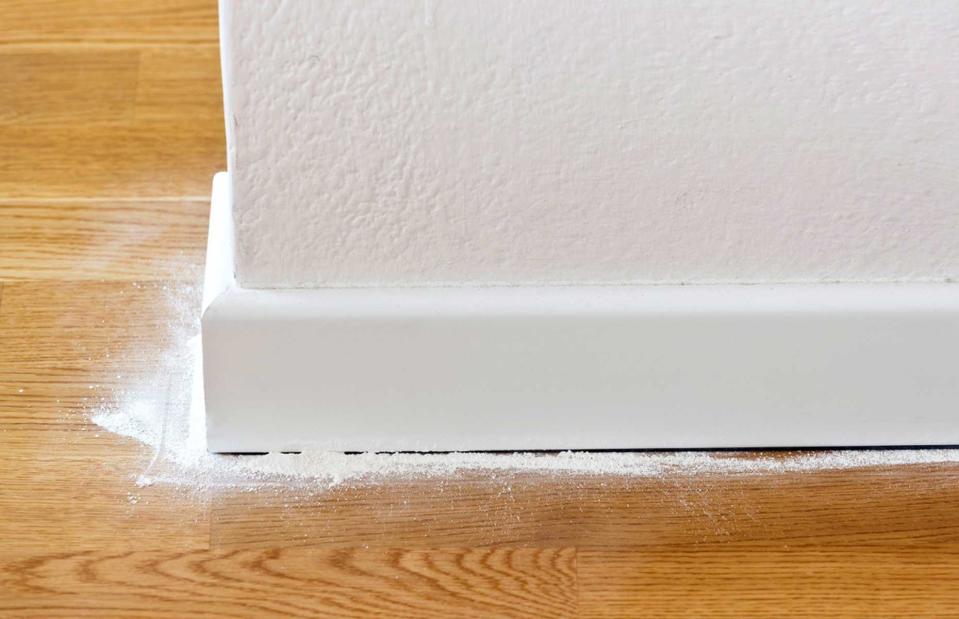

Antonio Gravante / Shutterstock
The best defence against ants is keeping a clean house, so be sure to clear up any runaway picnic crumbs or sticky residues from summer ice lollies. Sugar, honey and other attractive products should be stored in sealed containers.
If these persistent pests do get in, then ant powder will get rid of insect intruders within hours – but be mindful of where you spread the poison, especially if you have pets or children. For a more natural alternative, powdery lines of cinnamon or cayenne pepper should keep them behind enemy lines.
Cockroaches
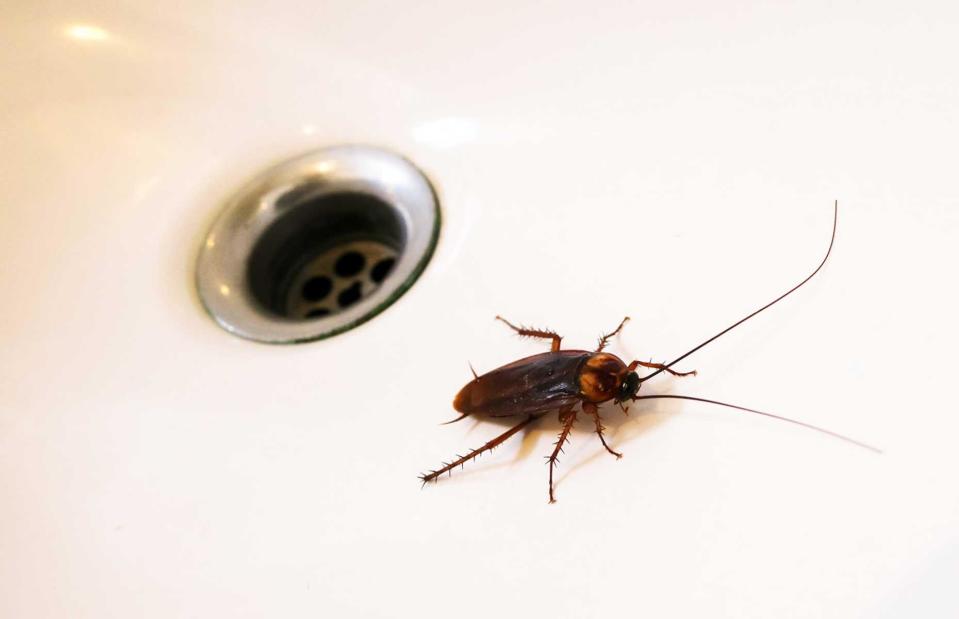

Some think these primitive, winged insects would survive an apocalypse. Well, don’t dismiss that old wives’ tale too soon, as researchers at Purdue University in Indiana tend to agree. They found evidence that a German cockroach species is becoming immune to some insecticides.
They love warm, dark spaces so can often be found under appliances or in food cupboards, where they feast on food debris, hair and dust.
Cockroaches: treatment
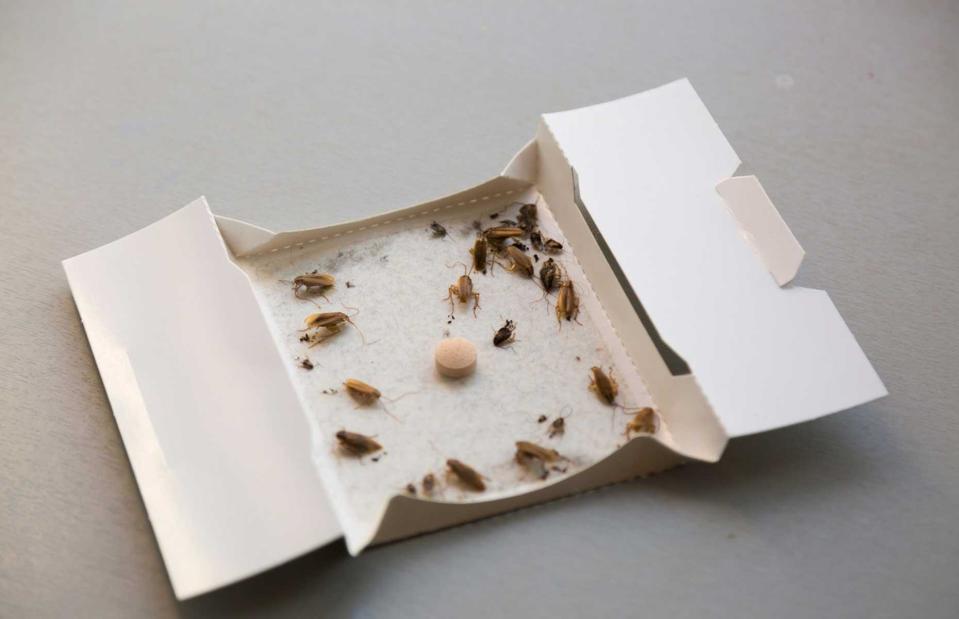

Michal Ludwiczak / Shutterstock
Cockroaches have an easy ride when entering properties. They easily crawl through small holes and cracks, particularly around water and waste pipes.
Keep roaches at bay by blocking all possible entry points. Secure rubbish bins and clear up any food or drink spills straight away. You’ll also want to keep your home dust and hair-free, as much as possible. To catch any critters who get through, try using adhesive cockroach traps to stop them in their tracks.
Fruit flies
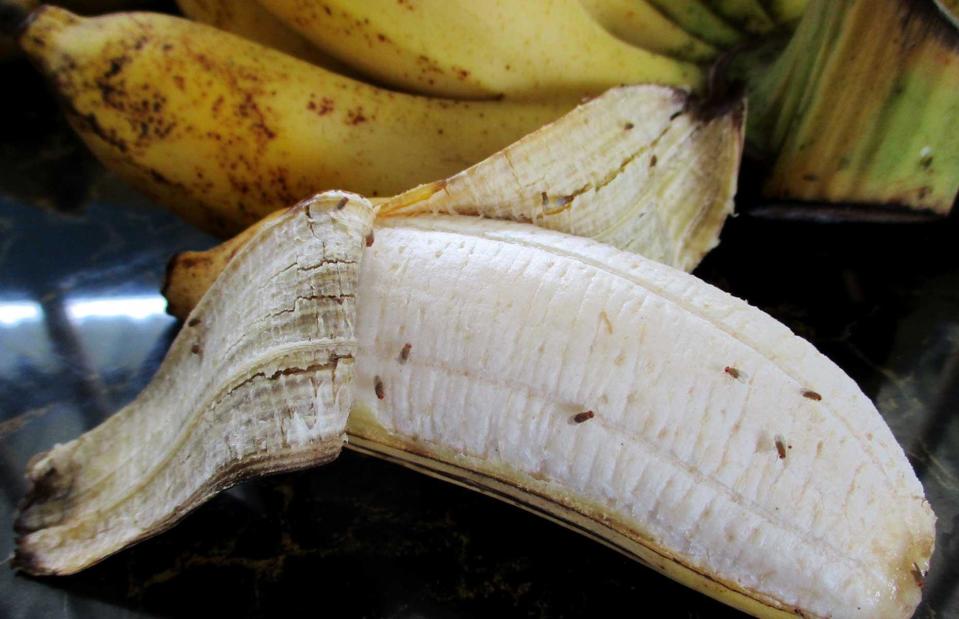

SUPAPORNKHA / Shutterstock
Hence the name, fruit flies are attracted to extra ripe fruits and vegetables, which is why you can often see them flying around the fruit bowl.
But they are not particularly picky – they are also partial to smelly drains, festering dustbins and even moist mops, where they will happily breed, especially in warmer weather.
Fruit flies: treatment
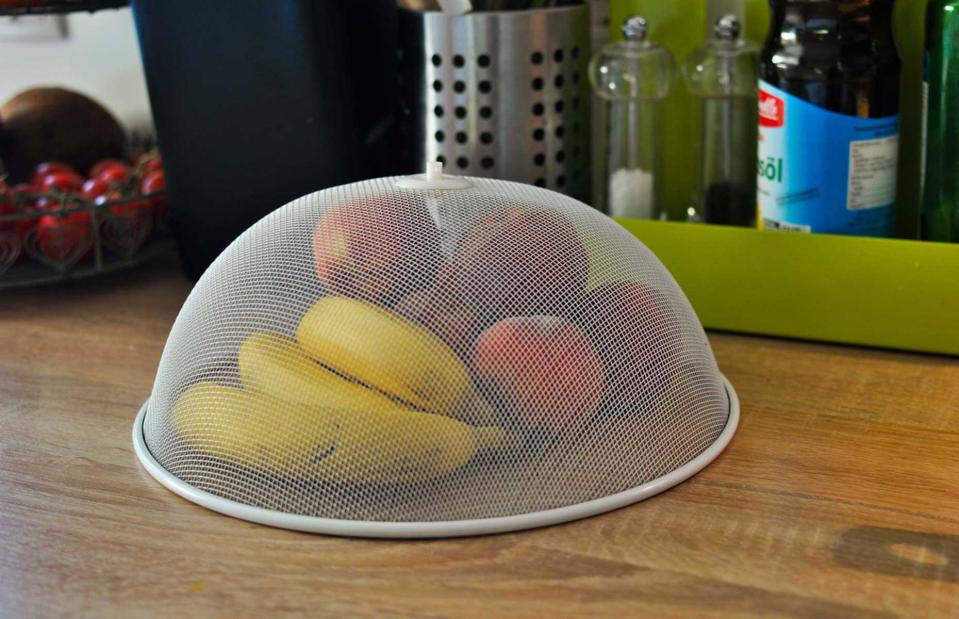

IchBinJeffee / Shutterstock
To rid your kitchen of pesky fruit flies keep fruit covered with cloches (or store it inside an airtight container) and eat it while it’s fresh. Deter the pests by keeping drains clean and bins tightly closed.
You could also create a DIY fruit fly trap, by utilising apple cider vinegar. Mix the vinegar with a few drops of dish soap and place it in a glass or jar. The flies will be attracted to the vinegar, as it smells like fermenting fruit.
Mosquitos
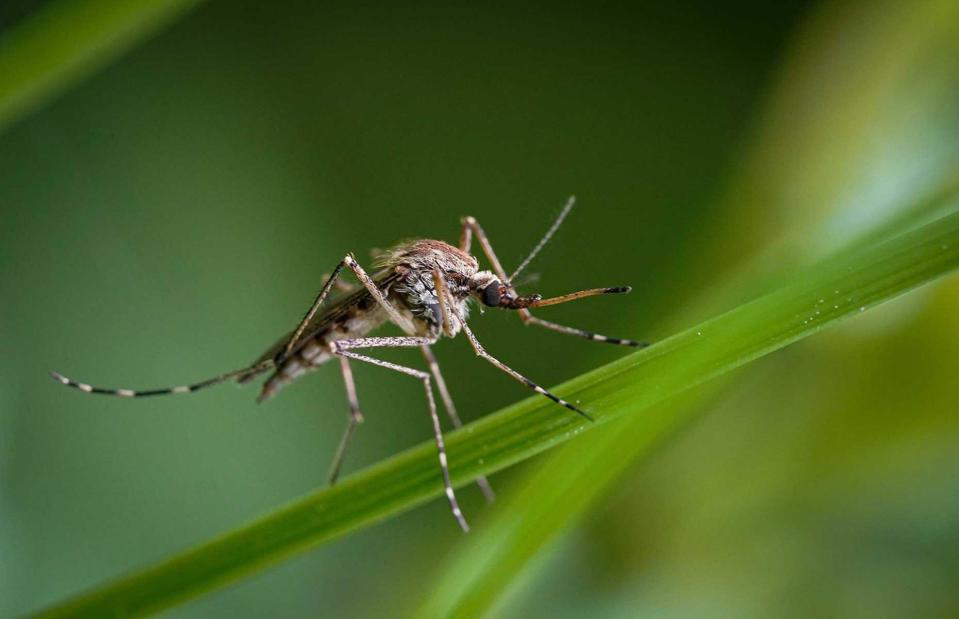

Unfortunately, we are most likely to want our windows open during the warmer months, when gnats and mosquitos are most active. According to Rentokil, these nasty insects are attracted to stagnant and standing water, as well as – you guessed it – humans!
“The greatest attractant for mosquitoes is our odour,” Rentokil says. “A female mosquito can smell body odour and exhaled carbon dioxide from up to 170 feet away.” Luckily, there are several things we can do to try and keep them at bay.
Mosquitos: treatment
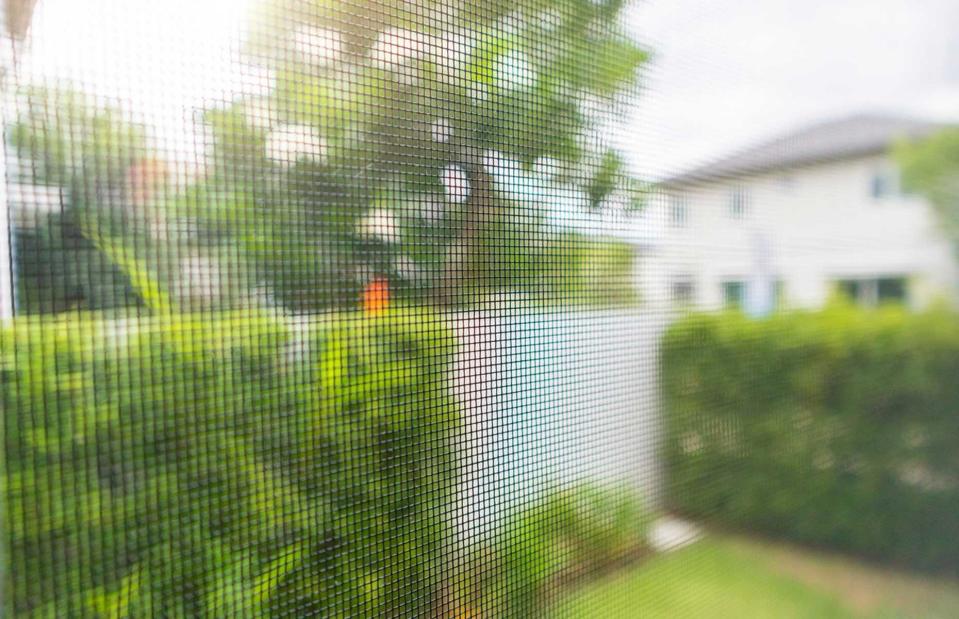

Kwangmoozaa / Shutterstock
The best method to stop mosquitos from entering the home is to install fly screens on doors, windows and vents. Keep lights turned off at night as much as possible, especially when windows are open.
Remove any stagnant water from around the house by changing pet drinking bowls, refreshing water in vases regularly and keeping toilet seats closed. You can also try growing lavender on windowsills, burning citronella candles and using essential oils such as peppermint, basil, eucalyptus and lemongrass.
Rats
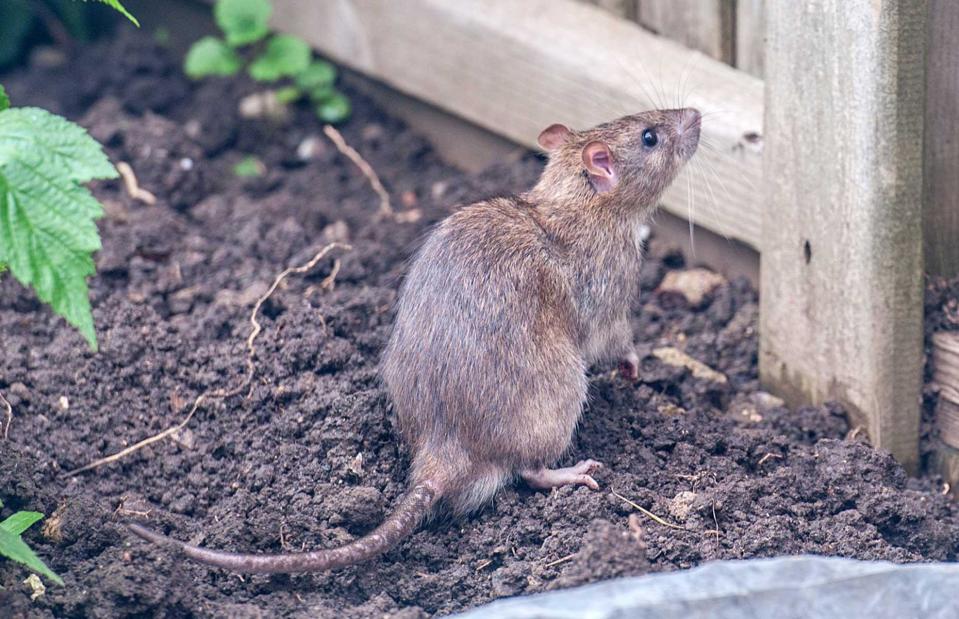

battybattrick / Shutterstock
A rat infestation can have devastating effects on the home and your well-being. They can also carry some nasty diseases, including Listeria and Salmonella. Property damage is also probable, as rats love to gnaw on pretty much anything.
Even worse, having a severe rat infestation could devalue your home by as much as 20%, if they get inside, according to the home insurance experts at Quotezone.co.uk. A home for a rat is anywhere that will provide food, shelter and water. According to the British Pest Control Association, late summer and autumn are the most common times for rat problems.
Rats: treatment
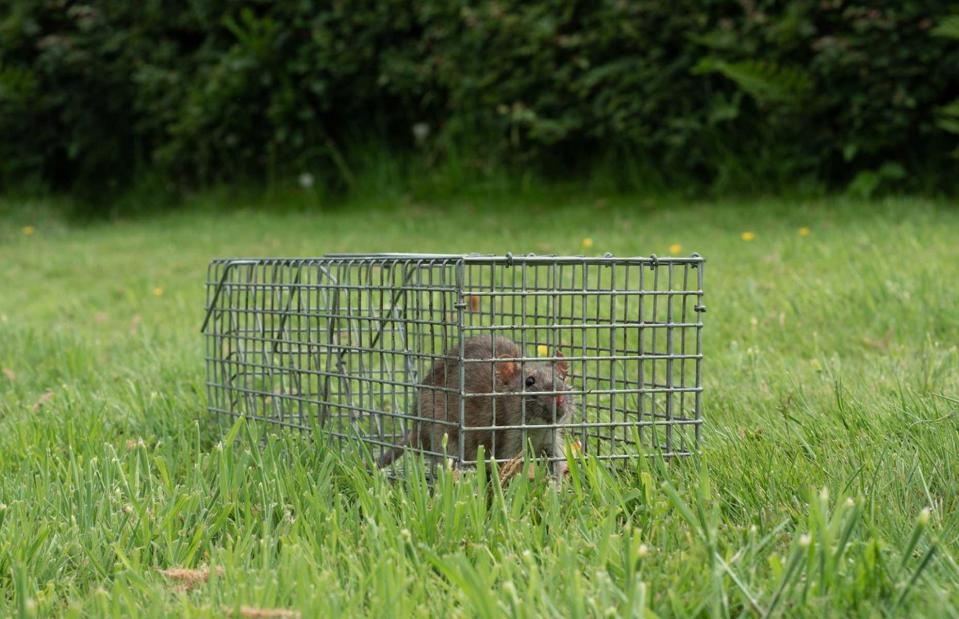

If you see evidence of rats outside, respond quickly before they have a chance to get inside your home. Keep your bins secure and clean away anything edible outside that could be tempting them, including bird feed. It might also be time to tidy up the garden – keep grass short, cut back overgrown areas and declutter storage spaces where rodents could hide.
You could even grow plants that deter pests, such as marigolds or mint. As well as blocking any possible entry gaps in your property, such as around pipes or under external doors, you’ll also want to seal holes in sheds and decking. Alternatively, ultrasonic equipment or humane traps can help keep these pests away.
Ground beetles
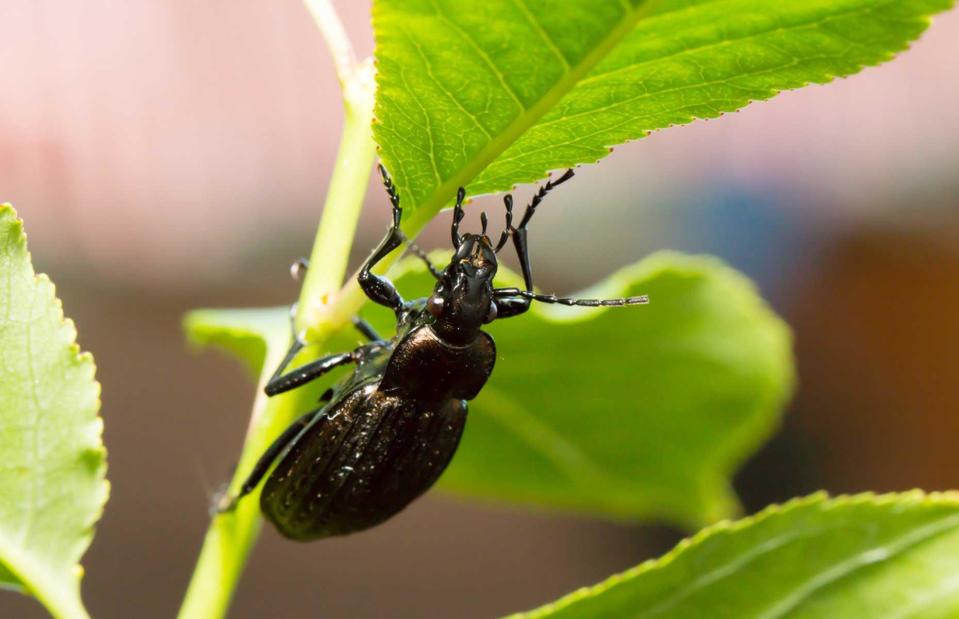

Nikolai Belyakov /Shutterstock
‘Ground beetle’ is a general term for more than 40,00 beetle species around the globe. They are mostly attracted to white light and can easily squeeze through minute gaps.
They come into the house to escape weather conditions. Other common types that love home comforts are weevils and carpet beetles.
Ground beetles: treatment


Valentina_G / Shutterstock
Natural methods of ridding beetles from your home include vacuuming, spraying peppermint or neem oil on entryways and laying sticky traps. As a last resort, hire a professional exterminator.
Slugs and snails
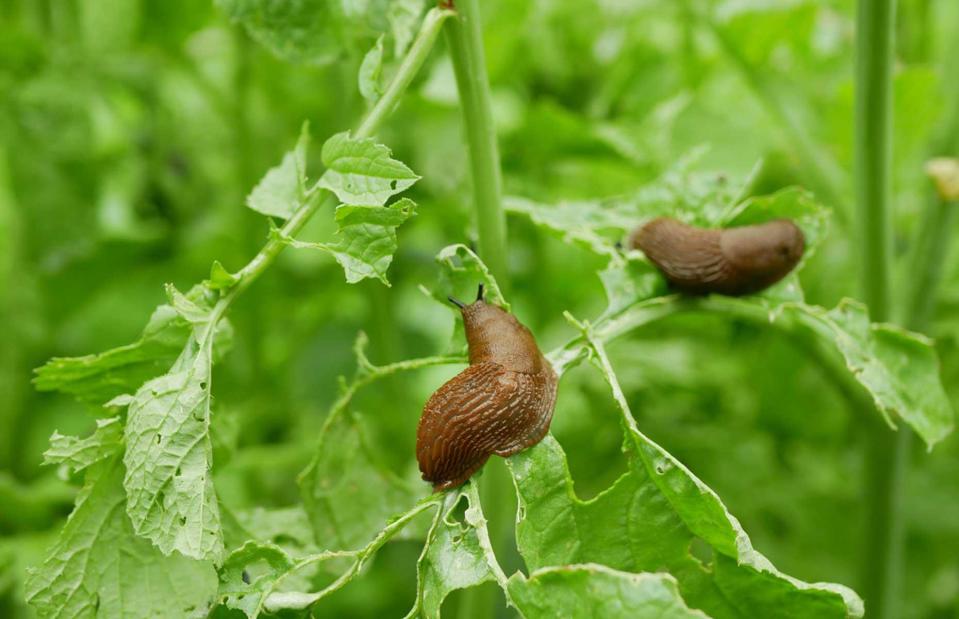

Tomas Vynikal / Shutterstock
As well as being common garden pests that will munch through your much-loved plants, slugs and snails can also slither slowly but surely into your house.
They are not very discreet about the intrusion either, as they will leave a trail of slimy evidence everywhere they go.
Slugs and snails: treatment
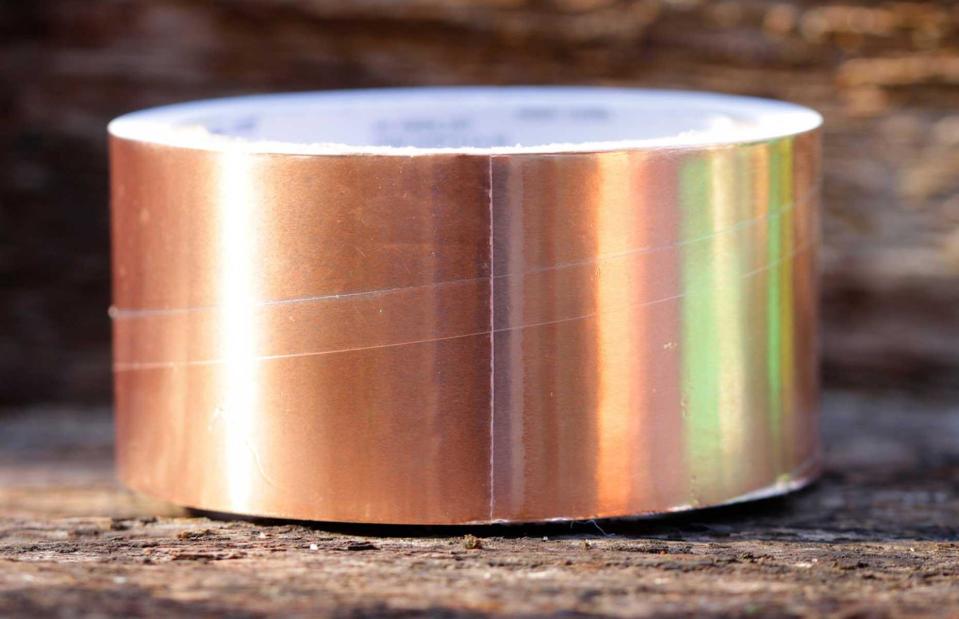

Art_Pictures / Shutterstock
One natural defence to halt slugs and snails in their silvery tracks is to lay down copper tape across any entrances they might be using. The metal will give invertebrates a kind of electric shock that stops them going any further. Other barriers, such as coffee grounds, crushed eggshells and wood pellets will stop slugs from being able to reach your plants.
Remember, slug pellets containing metaldehyde are illegal in the UK. Instead, try blending up garlic cloves with water to create a strong solution. “The scent of the garlic will naturally repel slugs once sprayed around your garden,” according to Garden Buildings Direct. “Slugs are also repelled by citrus fruits so place the peels and rinds of oranges, lemons and limes around the most vulnerable plants.”
Ticks
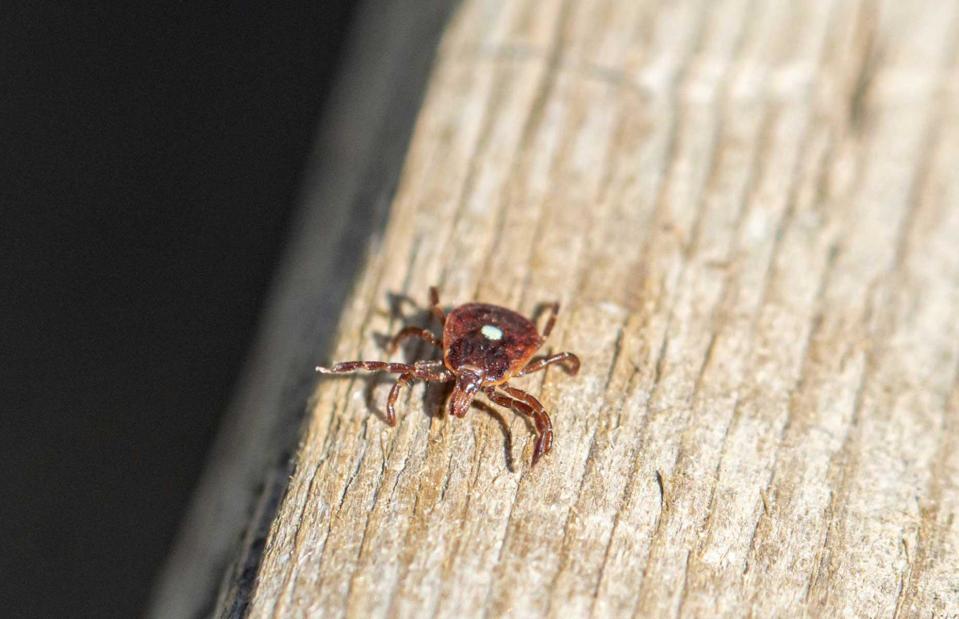

Maria T Hoffman / Shutterstock
Ticks can be brought into houses on domestic animals and even humans, after walking through long grass, especially in early summer and autumn.
They are a concern as they can carry Lyme disease and are very hard to remove fully from pet and human skin, if not extracted properly.
Ticks: treatment
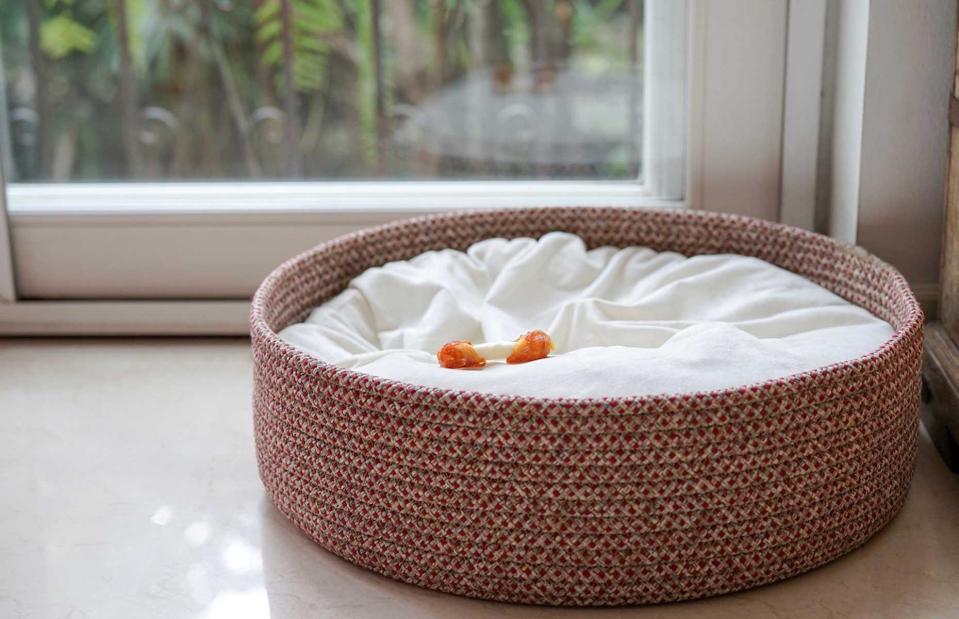

To prevent tick bites, wear long sleeves and trousers when walking in long grass and use an insect repellent with 20% DEET. When it comes to pets, make sure dogs and cats are up-to-date with their vaccinations, check their bodies thoroughly after a walk and regularly wash their bedding.
If you do find a tick on you or your pet, the NHS recommends using tweezers or a tick-removal tool close to the skin, to pull it slowly upwards, without squeezing or crushing the tick. Clean the bite with an antiseptic solution or wipe.
Mice
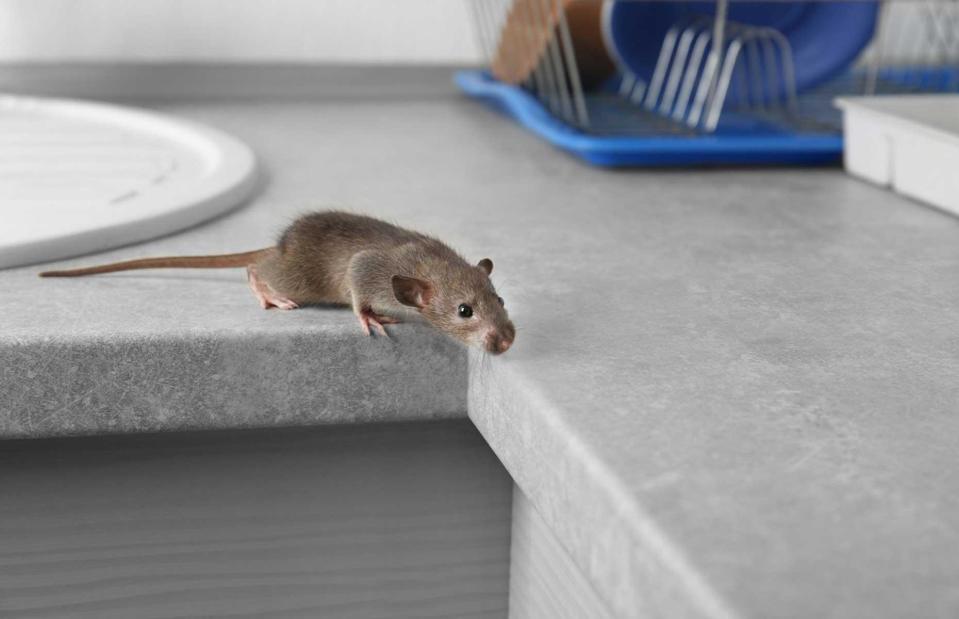

Africa Studio / Shutterstock
Mice might not have the same fear factor as rats, but these mini mammals carry the same diseases. In fact, they can be more dangerous as they mark their territory around food with urine, which carries harmful bacteria. The British Pest Control Association (BPCA) reports that mice are one of the most common pest species in the UK.
Mice: treatment
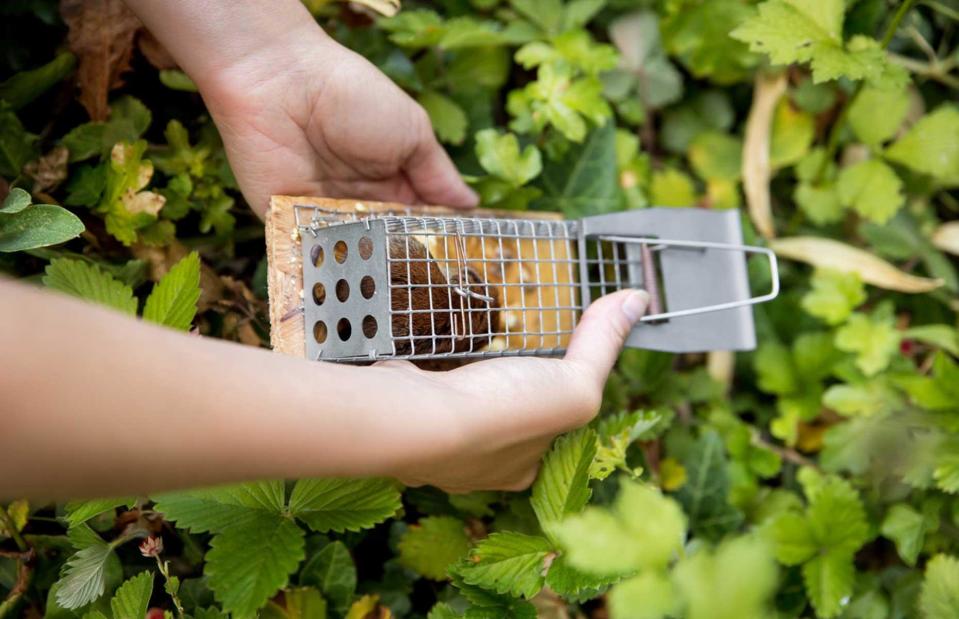

Miriam Doerr Martin Frommherz / Shutterstock
Prevention is better than cure, so seal any gaps as small as 5mm. Store food in air-tight containers, clean away debris and install door sweeps or brush strips on external doors.
If mice are already in your home, amateur-use traps – including humane live catch traps – are readily available in most hardware stores. However, when all else fails, call in an exterminator.
Wasps
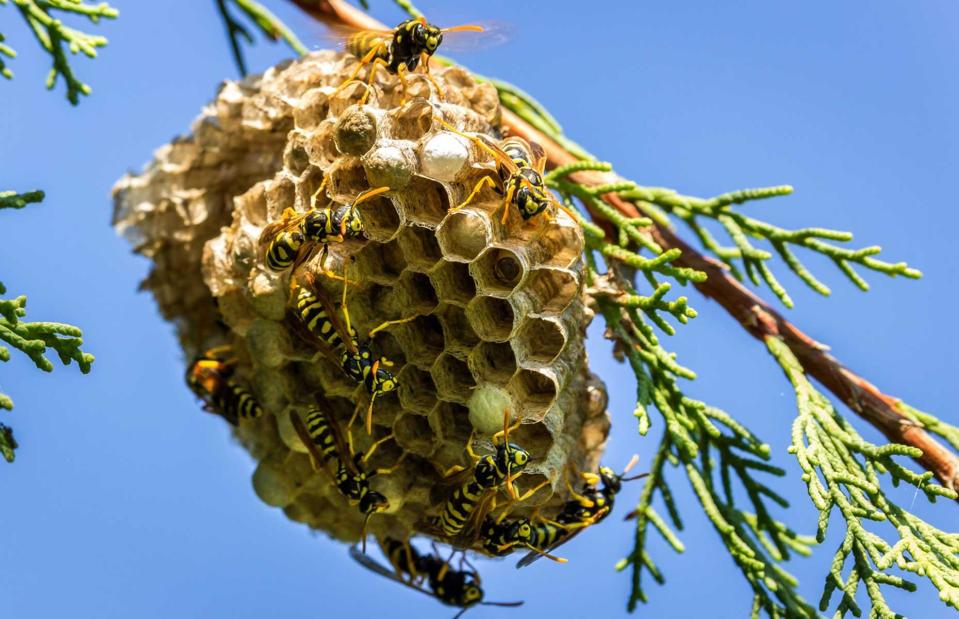

Fabrizio Guarisco / Shutterstock
If you have an increased number of wasps in your home and garden, then there is possibly a nest nearby.
Wasps like to set up colonies where it is warm and dry, so common nesting spots include sheds, garages, lofts and basements, where they can gain access through tiny openings.
Wasps: treatment
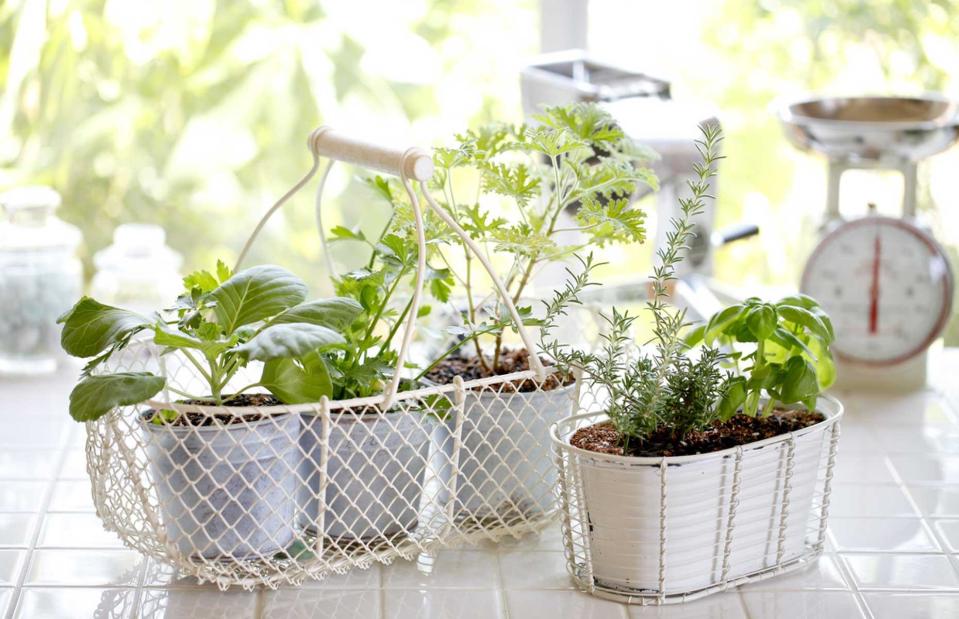

If you suspect you have a wasp nest near your home, never try to remove it yourself. Most local councils offer a pest control service, with qualified teams who can remove and destroy wasp nests safely.
In the meantime, Chris Bonnett of Gardening Express recommends either leaving them alone if they are causing no bother or following safer and more humane ways of removing them. Scents such as peppermint or a blend of clove, geranium and lemongrass oils are thought to repel wasps.

Sophie Anderson, a UK-based writer, is your guide to the latest trends, viral sensations, and internet phenomena. With a finger on the pulse of digital culture, she explores what’s trending across social media and pop culture, keeping readers in the know about the latest online sensations.








